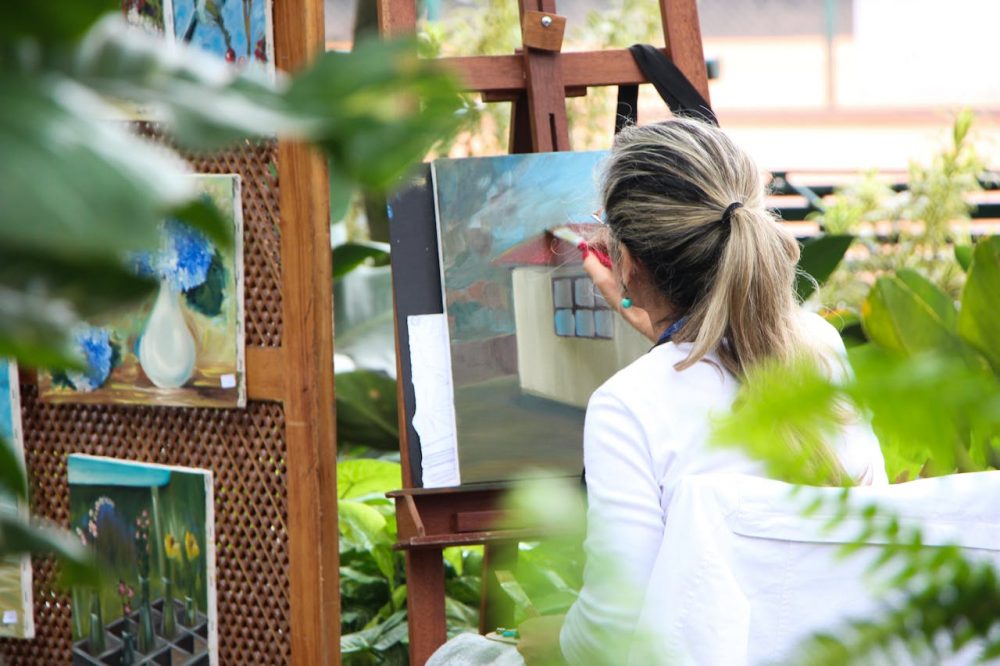Individuals of every age and kind are finding their interest in art. Such a passion for art is normally driven by the fact that it is a simple and fun way of expressing oneself. But, during their starting point, they might struggle with obstacles or a lack of inspiration. This can be overcome with the help of the acquisition of basic skills and the constant dedication of time to practice. What must always be remembered is that making gradual improvements is certainly a goal that can be attained and that it only means that you must follow a few simple steps.
1: Start with the Basics
Begin with the basics of art to give your artistic endeavor a solid background. This should be the drawing of simple shapes as those are the building blocks of everything. Through this you will also learn how to measure the angles and proportions as well which will help you a lot in making your drawing look more realistic. Furthermore, knowing how light and shadow alter the look of an object will certainly result in more lively and exciting artworks. Introducing colors in a cautious manner, through color theory, will also prove to be useful in making blends with colors appropriately and correctly. The daily practice of these basic skills in the form of making simple sketches will make you more confident and self-assured over time.
2: Explore Different Art Styles and Mediums
Creative expansion is about trying different styles and mediums. This will provide you with the choice of working with paint, charcoal and digital programs which you might not be quite used to. Experience and experiment with many diverse artistic techniques to discover something that makes you fall in love with artwork. As an example, learning about abstraction will challenge the norm or realism will make you pay attention to details. Additionally, learning how different materials are utilized to bring artworks to life makes you receive and use the freedom offered by various styles. Always adopt flexibility and become free as a creative person – do not be afraid to leave your comfort zone.
3: Learn Consistently Through Guided Practice
It pays to learn under the supervision of skilled teachers or engaged groups. Get advice and encouragement by visiting art groups, online forums, or creating communities to seek advice and inspiration. Engage in structured education through enrollment in online art classes where you can also learn step by step and get constructive feedback. Videos and workshops cannot be underestimated, as they provide you with access to professional techniques and tips that are useful in practice. It will make your skills settle and self-confidence accumulate as a result of constant practice of what you have learned. By following an organized learning plan, you remain disciplined and inspired to reach your goals.
4: Observe and Learn from Others
Use the knowledge from professional artists and your peers to make your own work better. Come and appreciate art up close in galleries and feel the variation in medium, scale, and texture of artworks. Try to concentrate on certain aspects of painting, like, color harmony or strokes, and take notes to adapt them in your artwork. Get involved in art groups and online communities to get constructive feedback and critiques that can bring your eye to blind spots. This is aimed at broadening your perspective and developing an artistic vision, which is achieved through the practice of evaluation and a combination of what you see.
5: Keep Creating and Tracking Progress
The artistic journey and the process of creating should be documented. Having small, achievable objectives is important like drawing a sketch a day, completing a painting in a weekend or trying something new every week. You can keep a record of your progress by making a folder of your best work or even a sketchbook that will lead you to the reflections of what you have accomplished so far. Revisiting older artworks will help you to see the improvement and also help you realize any patterns in your art. Be open to the mistakes made in your earlier works as they will serve as a basis for your development. Or it may be a sporadic creative walk or an artistic block, or celebrating your improvement and reserving your mistakes will only show you how far you have come.
Conclusion
The process of becoming better in art is incremental, slow-moving, and meticulously built with dedication. Through daily practice and learning, you will eventually be able to confront the challenges common among beginner artists, and gain skills over time. Mistakes are no longer to be feared, but to be anticipated as they will make people artistically wise. Errors are no longer to be feared but expected because they will teach people artistic prudence. Thus, remember to be curious, keep exploring and never reject everything that art can give you. Every great artist once began as an amateur and it should not devalue your value as an artist.



